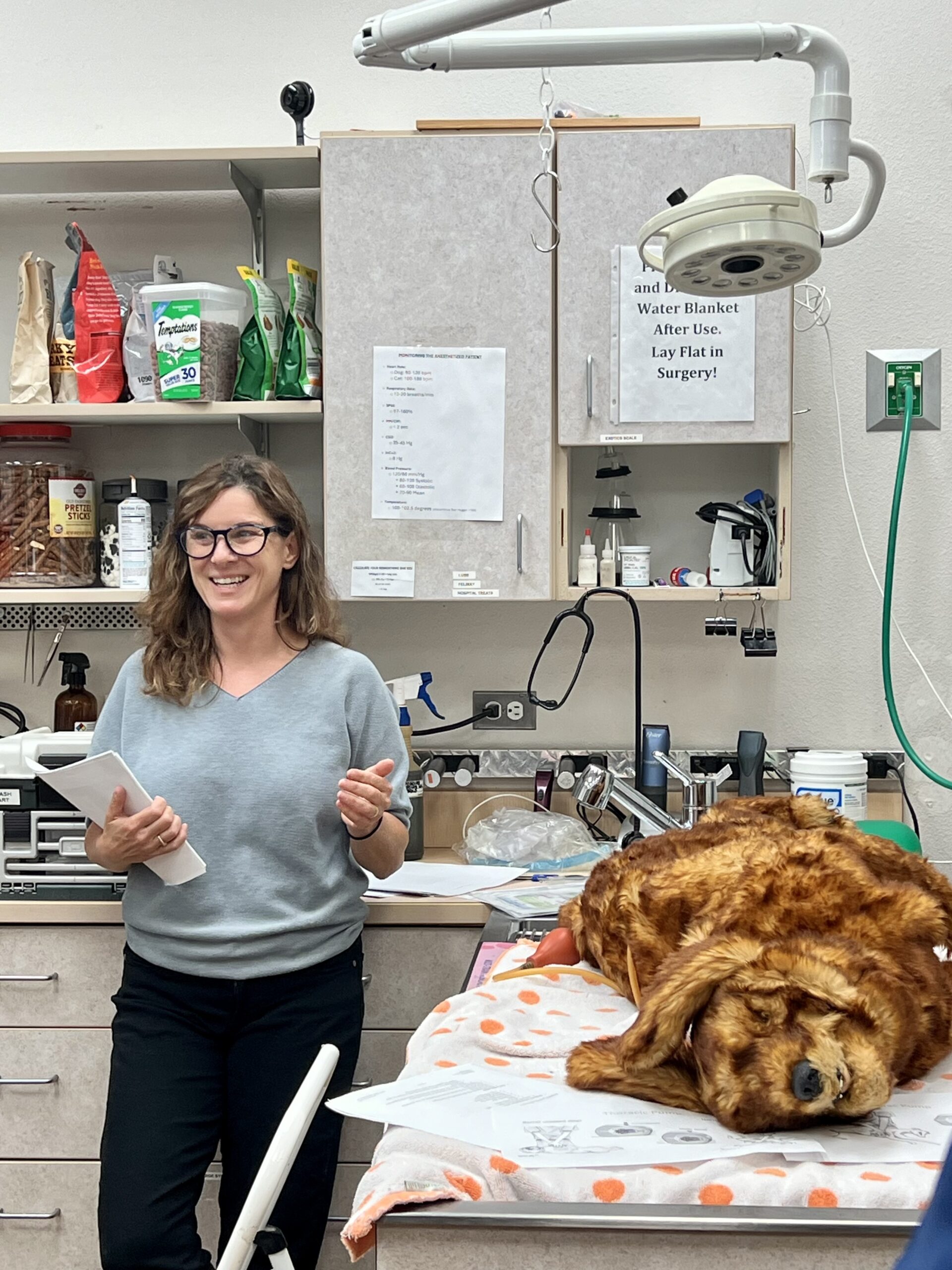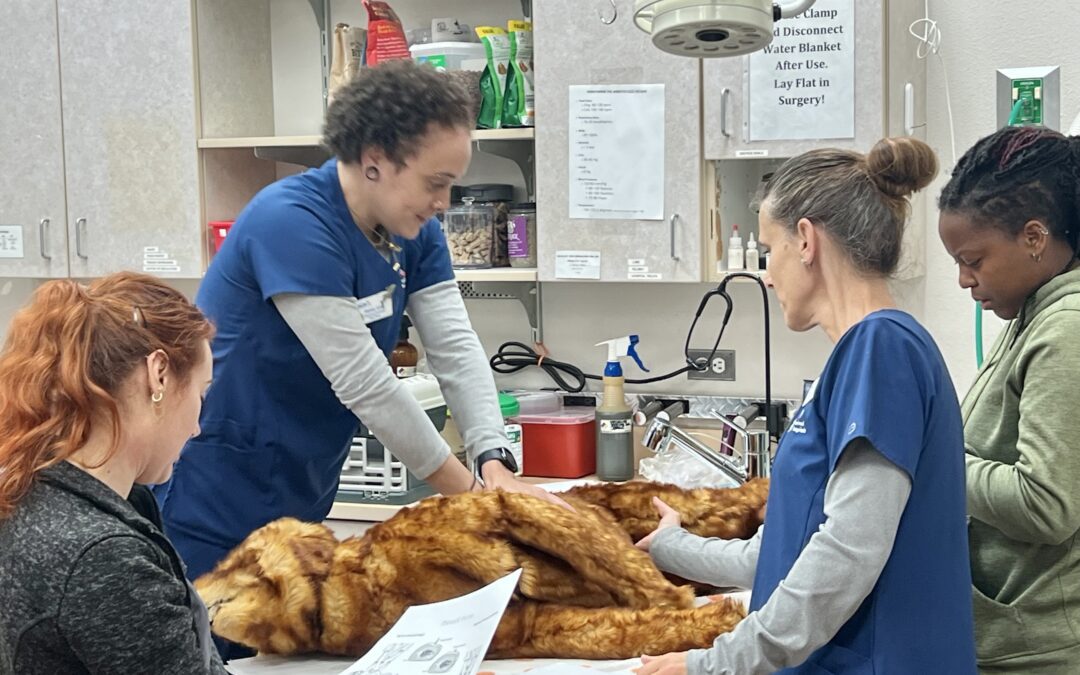Recently at the clinic, I admitted “Bagel,” an otherwise healthy 1-year-old beagle in obvious discomfort with increased respiratory noise that suggested an obstruction. After sedating the patient for an upper airway exam, Bagel went into cardiopulmonary arrest. Fortunately, because of my team’s fast response, we successfully revived him with CPR. The dog’s airway was severely compromised by a large mass, later revealed as an abscess from a migrating foxtail that had punctured the oropharynx.
After the dust settled and I had a chance to look around, I was able to focus on how the situation impacted our team. In addition to the standard post-CPR debriefing—an effort to improve patient care—our experiences revealed ways to care for each other and add cultural value to our workplace through everyday leadership.
What leading means
Leadership isn’t an attribute reserved for those in authoritative roles, but one that any team member can adopt and implement. Whether you’re a practice owner, manager, senior associate, or recent grad, you can lead and support others through your actions, reactions, and efforts. Effective leadership at any level can generate positive cultural change, including:
- Enhancing morale
- Providing or supporting vision and direction
- Promoting cohesion and unity
- Fostering a culture of openness and trust
- Operating from a place of curiosity and compassion
Listening and observing
Observing your colleagues, associates, and team members and listening to their concerns can help inform your supportive efforts. This hands-off approach also lets you put yourself in their shoes—remembering when you were a summer employee overwhelmed by the emotion and drama of a CPR code, an experienced technician grappling with a string of negative outcomes, or a recent graduate doubting their academic knowledge in the face of practical challenges. With fresh eyes and an open mind, you can add reassuring, empowering, and thoughtful values that uplift the entire team.
Empower with targeted training
While Bagel’s resuscitation was successful, our less-experienced team members inspired me to conduct another all-staff CPR training. With a real-life scenario fresh in their minds, everyone—regardless of experience level—was engaged and invested, hungry to learn and to feel more competent and comfortable during future emergencies.
Equipping team members with relevant training sets them up for success and shows that you recognize their potential. Additionally, through shared training experiences, the team learns to function better as a unit, bond over common goals, find their collective rhythm, and, ideally, enjoy better patient outcomes.
Find out what your team wants to learn—collectively and individually—and feed their interests. This doesn’t require a formal or an all-day affair—small everyday moments between peers can be great opportunities to share your knowledge or special interests. They also go a long way toward boosting morale, increasing confidence, and building an empowered and inspired team.

Acknowledge and navigate emotional challenges
As our CPR training concluded, I was riding high on the satisfaction from a dynamic and productive educational experience. When I opened up the floor, one of our senior technicians grounded my sense of accomplishment with a single, honest question:
“But, how do we deal with it?”
Although I had thoroughly addressed the technical CPR portion, I omitted the equally important aspect of processing the roller coaster of emotions from such an event. The technician’s question opened up an unexpected training opportunity—one that could ultimately protect team members from burnout, compassion fatigue, and reduced job satisfaction.
Acknowledging these difficult emotions and their potential impact and sharing wisdom on their management can benefit the team enormously. Our conversation included:
- Naming the challenge — My team had witnessed only my composed exterior and were surprised to learn that I, too, struggle in the aftermath of cases like Bagel’s. Such admissions remove any stigma or shame, stimulate conversation, and validate the team’s emotional state.
- Talk it out — Allow safe, honest, and vulnerable conversations that could include well-being debriefs after emotional events or informal check-ins with the team.
- Provide healthy and sustainable strategies — Share helpful tips and resources to help colleagues process and let go of difficult emotions.
- Recognize generational differences — Recognize that associates and team members from younger generations may want to share and explore their emotions and need additional support to talk through their feelings, while seasoned staff from more reserved generations may feel less compelled to share.
Celebrate the wins
Finally, and this is a fun one, take the time to recognize and celebrate individual and collective wins—no matter how small. While you may see something as simple as receiving your diploma in the mail, completing your first solo surgery, or drawing blood as commonplace, these moments are monumental for early career veterinarians and other team members. Share in the joy of these wins and remember that sense of accomplishment and arrival. Recognition reinforces learning, encourages continued effort, and helps less experienced peers or staff feel valued and motivated. Plus, you will remember and stay connected to the intrinsic rewards of life in veterinary medicine and, ideally, be reminded of your original “why”.
While a successful CPR code is always worth celebrating, I would have been equally intentional in acknowledging our team after a negative outcome. When wins are difficult to find, recognizing effort, intention, and teamwork can keep encouraging your associates or peers.
Bagel the beagle is one of those feel-good patient stories every veterinarian wishes for and is lucky to get. I hope that when our team looks back on his case, they don’t remember his case only as an all-too-rare CPR success, but as one that made them better caregivers, teammates, and leaders—who will perhaps someday find themselves in a similar situation with an inexperienced team who is looking to them for guidance.
Ready, Vet, Go Veterinary Mentorship is an innovative online program and community that helps new and early career veterinarians build confidence, gain independence, and experience greater joy. Visit our FAQ page to learn more about what we offer or get in touch with our team.

